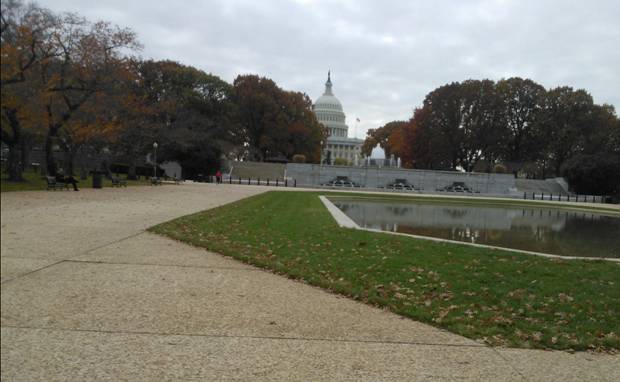Budget sequestration – it’s not Congress’s first rodeo
A ticking time bomb is set to go off in January that would cost millions of jobs, stifle discretionary spending investments in disaster response, conservation, education, research and innovation as well as increase taxes on millions and potentially spur another recession – the fiscal cliff.
Coinciding with the expiration of a series of tax cuts and unemployment benefits, the fiscal cliff also includes across-the-board cuts to defense and non-defense discretionary programs, enacted under the Budget Control Act (P.L. 112-25). These programs were targeted in an effort to jeopardize funding that was important to both parties in a manner that (one would think) would encourage the expedient development of a bipartisan solution to addressing the federal debt.
The effort (thus far) has proved to be not only futile but would likely do more harm than good. A report from the Bipartisan Policy Center (BPC) concludes that allowing the discretionary spending cuts to be implemented would hurt a number of critical government services and cost over a million jobs. Further, BPC notes that full implementation of the sequester will only delay by two years the date at which public debt surpasses 100 percent of the nation’s gross domestic product as increased mandatory spending programs coupled with decreasing revenue are the primary drivers of our burgeoning debt. Another report from the non-partisan Congressional Budget Office adds that extending the tax cuts set to expire would save or create up to 1.8 million jobs. However, the sequestration’s basic concept of holding beloved investments hostage in favor of a long-term compromise is not exactly new.
The sequestration method was initially implemented during the 99th Congress under the Gramm-Rudman-Hollings Balanced Budget Act of 1985 (P.L. 99-177). The bill instituted a five year plan to lower the national debt, which had reached record levels at the time. The legislation was introduced by Sens. Phil Gramm (R-TX), Warren Rudman (R-NH) and Fritz Hollings (D-SC). If deficit goals were not met in any given year, automatic spending cuts (50 percent from defense and 50 percent from non-defense discretionary spending) would occur. The bill passed the Democratic House by a vote of 271-154, the Republican Senate by a vote of 61-31 and was signed by President Reagan Dec. 12, 1985.
Implementation of the sequester under P.L. 99-177 rested with the Comptroller General of the United States, who also serves as the Director of the General Accountability Office (GAO). Given that GAO is part of the legislative branch, the US Supreme Court ruled the law unconstitutional in 1986 as a violation of the separation of powers. The court stated that the US Constitution commands that Congress play no role in the specific implementation of laws.
During the 100th Congress, which convened in 1987, Democrats controlled the House and Senate for the first time since 1980. Congress passed a subsequent law that year moving sequestration authority over to the Office of Management and Budget (placing sequestration implementation in the more appropriate hands of the executive branch). The second bill, the Budget and Emergency Deficit Control Reaffirmation Act of 1987, was signed into law by the president on Sept. 29, 1987 (P.L. 100-119). The law increased the debt limit and extended the system of deficit limits through Fiscal Year 1992.
Before the debt limit sequester could be reached, the 101st Congress passed the Omnibus Budget Reconciliation Act of 1990 (P.L. 101-508), signed into law Nov. 5, 1990 by President George H.W. Bush. Enactment of the law had been forced by the pending automatic discretionary spending cuts that were set to be implemented that year. A tentative deal had been reached Oct. 1, but conservative House Republicans helped to defeat it by a vote of 179-254. Congress passed an extension measure, which Bush vetoed, adding pressure for both parties to reach a deal before year’s end.
The final enacted bill projected a deficit reduction of $496 billion over five years, set five-year discretionary spending caps and instituted the PAY-AS-YOU-GO (PAYGO) rule, which required all spending increases to be offset with spending reductions or revenue increases. The bill also instituted a number of tax increases, including increasing the gas tax, taxes on alcohol and cigarettes and raising the cap on taxable Medicare wages. Despite its role in costing Bush a second-term, the measure is often credited as laying the foundation for the budget surpluses enjoyed in the late 1990s. The PAYGO rule also remained in effect throughout the subsequent Clinton administration. However, Congress did not renew PAYGO during the George W. Bush administration and it expired in 2002.
Unlike the 99th Congress, our current policymakers have both a historical perspective and a rough blueprint to work from. Let’s hope that this helps them come up with an agreement that minimizes can-kicking as well as detrimental impacts on the nation.
